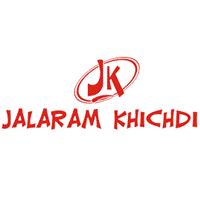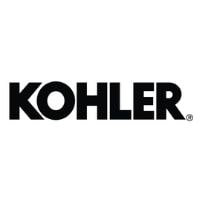How 5s consultant can help you?
5s consultant can help you to implement sustainable 5s practice. we have implemented 5s practice across the globe. we are known for our result-oriented and sustainable 5s is not housekeeping practice. A professional 5s consultant will help you to get the following result
- Space optimization
- Productivity improvement
- cost reduction
- Safety
- Inventory management
As a 5s consultant, we handhold the complete project. we provide 5s training at various levels. we provide technical guide line and take the project to suitable and culture building.
History of 5S Methodology
History of 5S was 16th century older in Venice shipbuilder. In those days with the help of 5S quality process production of the ship reduces from weeks to days. The 5S methodology was developed by Sakichi Toyoda, his son Kichiro and Toyota engineer Taichi Ohno which one later has known as a Total Production System of TPS after world war II. They referred to the Ford Motor Company’s assembly lines and the inventory process as well as the supermarket concept. From the analysis, they identified the waste in the assembly line due to waiting for the completion of the prior operation. In today’s modern world many organizations are hiring 5s consultants.
5S methodology formed by Toyota gives importance to all levels of employees. They realize that for the process and final product every job was essential. They minimize the level of waste and organize the workplace which leads to timely outcomes with employee pride. This concept of innovation in product and process improvement use by the Toyota Motor Corporation stand them as the first utilize of the 5S Methodology. As per history, 5S is the way to utilize good housekeeping and skill to achieve results in the best efficient way. 5s consultant can help for smooth implementation.
Our Services
What is 5S?
5s consultant can help you understand this with much ease.
5S at its core is about removing non-value-added processes by developing standard methods for doing the necessary work. An effective 5S program, therefore, improves efficiency, quality, workflow, and employee safety. All steps of 5S begin with the Japanese word – “S” so it names 5S
- Seiri (Sort)
- Seiton (Set in Order)
- Seiso (Shine)
- Seiketsu (Standardize)
- Shitsuke (Sustain)
Benefits of 5S
- Saves time wasted searching for tools.
- Reduces the amount of walking to complete tasks.
- Increases safety by eliminating stretching, bending, and tripping hazards.
- Increases equipment reliability.
- Standardizes steps for easier and more accurate cross-training.
- Frees up valuable floor space.
- It helps lay the foundation for a continuous improvement culture.
What is not 5S?
- It is not just cleaning up your workplace
- It is not about just labeling the item
- Not just arranging the things in order
- It is not about standardizing the way our work is done.
- It is not about audit forms or checks sheets or fancy radar charts
Why implement 5S?
- Improve housekeeping practices
- Encourages visual control
- Eliminate unwanted things
- Eliminate distraction
- Reduce inventory
- For better utilization of space
- Improve productivity
- Improve quality
- Improve safety at workplace
- Promotes workflow
- Reduces searching time
- Reduces unplanned downtime
- Encourage people for discipline to follow the standard workflow
- Identify the problems
- Enhances Teamwork
- Identifying abnormalities
5s consultant will help organize many of the above.
How to implement 5S?
Once a company decides to move forward with 5S, it is important to plan appropriately. Some items to consider are choosing the right project leader, 5S champion, team members, the size of the area to address, timeframe, and ultimate goal.
- Project Leader—The project leader must be someone who has a thorough understanding of 5S and significant experience in managing and implementing process change.
- 5S Champion—This is typically the person responsible for the area. They will be in the trenches while also giving guidance and instruction to the team.
- Team Members—Make sure to get everyone that works directly in the area involved with the 5S implementation. Additionally, it is a good idea to have one or two people from outside the department, for someone can think differently from the routine work
- Size of the Area—Some companies opt to implement 5S across the entire plant all at once. This is generally a bad idea. It is much more effective to choose an area around 1000 sq. ft. so that all of the necessary work can be completed. Ideally, choose an area where a set of work processes begin and end. 5S should help the work to flow through this set of processes.
- Timeframe—There are two options about the timeframe for the initial 5S event. Option 1 is shut down the area for 3 to 4 days and has the team dedicated to this event. Option 2 is to fix a few hours a week or one day a week until the event is complete. Many companies find this option easier to manage, as it is less disruptive to the operation.
- Ultimate Goal— As with any process change, it is important to determine the overall objective before proceeding. Some companies use the first three pillars, Sort, Set in Order, and Shine to simply clean up the place. While this gets the area cleaned up, it will not be sustainable without the other two pillars, Standardize and Sustain. The company needs to decide upfront whether this is just a quick cleanup project or an overall change on how to manage their work process. A true 5S program never ends, as it is always making the workflow easier, safer, and faster.
Step- 1 – Preparation of 5S implementation Team
Step- 2 – Prepare plant layout, divide the whole company into smaller areas
Step- 3 – Area allocation for to team members
Step- 4 – Assessment of current 5S score
Step- 5 – A set target for implementation
Step- 6 – Conduct Training for implementation team and employees
Step- 7 – Implementation of 5 steps of 5S
- Sort (Seiri )
- Set in Order (Seiton)
- Shine (Seiso)
- Standardize (Seiketsu)
- Sustain (Shitsuke)
Step- 8 – Regular audit after each step
Step- 9 – Assessment of 5S score at each stage
Step- 10 – Comparison with before and after the situation
Step- 11 – Rewards and reorganization for best implementation
Sort (Seiri) – Sort means that you remove all items from the workplace that are not needed for the current production or transactional operations. It does not mean that you only remove the items that you know you may never need. It does not mean that you simply arrange items in serial or alphabetically.
ASK QUESTION:
Is this item necessary to do this job?
Do we really need these items?
- Examples of Sort
- Defective or excess unneeded items that accumulate
- Outdated or broken jigs and dies
- Worn-out bits, inserts
- Outdated or broken tools or inspection equipment
- Old rags and other cleaning supplies
- Electrical tools/equipment with broken cords
- Outdated posters, signs, notices, and memos
- When you sort, you only leave the bare essentials
“When in doubt, move it out.”
Set in Order (Seiton) – Set in order means that you arrange the items that are needed in the area and identify them or label them so that ANYONE can find them or put them away “A place for everything, and everything in its place”
ASK QUESTION:
Would a new person in this work area know where this item belongs?
- Benefits of set in order
- The person sent to find something finds it easily
- Time spent looking for things is reduced
- Wrong parts are not retrieved in error
- Adequate space is allocated for storage of items
- Items have “their place” and not left in walkways
Think of a pit crew at a NASCAR race–every item is positioned to error-proof and speed the process and to eliminate all wasted motion: 17 seconds to change 4 tires, fill the gas tank, wash the windows, and give the driver a drink.
Implementation set in order
- Store items together if they are used together, and store them in the sequence they are used.
- If tools are being set in order, design a system that keeps the tools in their location.
- Store the item away from work area which is not frequently used
Look at your workplace which one is most unorganized. Will you able to find the things or able to find the place for things immediately?
Shine (Seiso) – Shine emphasizes removing the dirt, grime, and dust from the work area. This is an activity of keeping the work area swept and clean of debris. Floors are swept, machinery is clean and wiped off and everything in the work area is kept clean
ASK QUESTION:
Are there items in the area that need to be cleaned?
Benefits of Shine
- Defects are easier to see in a well-lit and clean environment
- A work area free from clutter is fewer chances of hazard
- Machines that are clean and maintained work more efficiently and
- break down less often
- A clean work area promotes improved morale and installs pride in
- the team members
Defects are easier to see in a well-lit and clean environment. A work area clean of debris is less likely to reduces the chances of hazard. Machines that are clean and maintained work more efficiently and break down less often. A clean work area promotes improved morale and installs pride in the team members
- Determine the shine targets: what are we going to clean?
- Set a schedule and assign individuals
- Create procedures for continued daily shine processes
- Set periodic machine inspection and maintenance targets
Do activities take place to prevent dirt, grime, and contamination from occurring?
Standardize (Seiketsu) – Creating a consistent way of implementing the tasks that are performed daily including “Sort,” “Set in Order,” and “Shine”
“Do the right things the right way, every time!”
ASK QUESTION:
Are the methods/processes in place to keep the first three Ss
Maintained and ongoing?
- Is 5S practiced throughout the day?
Benefits of Standardisation
- Easier to train new employees
- Less room for errors and scrap
- The work area is more organized
- The work area is safer
Just like in our personal lives, if the rules are in writing and right in front of us, we are much more likely to understand and follow them, especially if they have our signature on them! Integrate the benefits found through Sort, Set in Order, and Shine into the everyday work activity
Make it a way of life
- It should be easily noticed when items are not in their place
- Keep it “visual”
- All 5S activities should be scheduled at the frequency rate necessary to maintain a clean, orderly, and safe work environment
Documentation exists to show how, where, and when 5S activities take place.
Sustain (Shitsuke) – Sustain means that the 5S mentality is ingrained in everyday work life and procedures. Sustain means that the 5S program has a discipline that ensures its continued success. Sustain involves making a habit of maintaining correct procedures. Do not let 5S become another “flavor of the day”
ASK QUESTION:
Are things reverting back to the unorganized way they were?
Benefits of Sustain
- Cleaner, safer, working environment
- Detailed tasks are documented to make processes more efficient
- The workplace is maintained in an organized fashion without clutter
- Tools and materials are easier to find
- Higher employee morale
The first four Ss are solidly in place and being practiced daily. Every day we do some 5S.
- Keep everyone aware of 5S and its benefits
- Make time each day to perform daily tasks
- Make it structured
- Give recognition where it is due
- Establish audit for 5S review
Summery
- 5S is a process and method for creating and maintaining an organized, clean, and high-performance workplace.
- Due to the 5S, the normal and abnormal condition can be identified earlier
- 5S is the foundation for continuous improvement, zero defects, cost reduction, and a safe work area.
- 5S is a systematic way to improve the workplace, our processes, and our products through production line employee involvement.
- 5S can be easily implemented by following all of the steps. DO
- NOT SKIP A STEP.
- 5S must become part of the self-responsibility of everyone.
- 5S is a team-work process between the members of the work area.
To review, some of the benefits of 5S include:
- A clean, orderly workplace
- Improved safety
- Improved efficiency
- Increased employee morale
- Standardized work methods
Tips for implementation
- Train employees.
- Build a team for implementation.
- Assign time and develop a program for implementation
- Provide resources for implementation.
- Recognize and support the implementation by Team leaders, managers, and directors.
- Stimulate creativity of all workers, write down their ideas, and allocate resources to develop those ideas.
- Create visible and invisible benefits as a reward.
- When beginning a 5S implementation in your company or organization choose a reliable, engaged, and committed team, and select an easy work area so that you can guarantee success. This will smooth the way for the are which is more difficult.
- Measure the 5S score, audit, and take action. This activity needs to be done again and again.
- A Few Hours of the 5S training workshop is a good way to begin the implementation. Some managers or directors should participate in the workshop so that operators see that the company is committed.
- The 30 seconds test is an easy way to make sure you have done a good job: you should retrieve any item, tool, information, document, or person in less than 30 seconds.
- Encourage people to be creative.
Why 5S fail?
Virtually all companies that choose to implement a 5S system will get started with the best of intentions. Unfortunately for many facilities provided by the organization, after a time people lose their focus on 5S and it falls by the wayside. To understand why 5S sometimes fails is something that all companies should learn before beginning their implementation, so they can take steps to avoid common problems. The following are some of the most common reasons for 5S implementation fails in a company.
Failing to Get Initial Buy-In
When 5S is started at a company where serious efforts to secure buy-in from the top down aren’t made, you can be confident that it will fail over time. 5S requires a real commitment by people ranging from the front-line employees up to the CEO or owner of the facility. When looking to start a 5S program in a facility, the first thing that needs to be done is to get real commitments from all levels of management. If all team members aren’t willing to commit to the long-term success of 5S, it is likely better not to start the program at all.
Cost Savings are Not Tracked
Even when 5S is working well, the program can be canceled or lose focus if the benefits can’t be easily tracked. When a company wants to cut unnecessary expenses, they may look at 5S, and if it can’t be shown how this program is improving the bottom line, it will lose any time or other resources that were allocated toward it. Monitoring by tracking all details of everything that is done through the 5S program will help to maximize the chances of its success.
Lack of Direction
To be maintained over the long-term, 5S requires a real direction. Those involved in the activity will undoubtedly come up with many different ways that it can benefit the company. Attempting to new ides implement them all over a period of time they are discovered will be very disorganized and ineffective. Having a good core group that manages the 5S strategies will help to maintain focus, and ensure the most important changes are made first. This will help to keep everyone engaged and ensure the 5S system sustainable in the future.























































